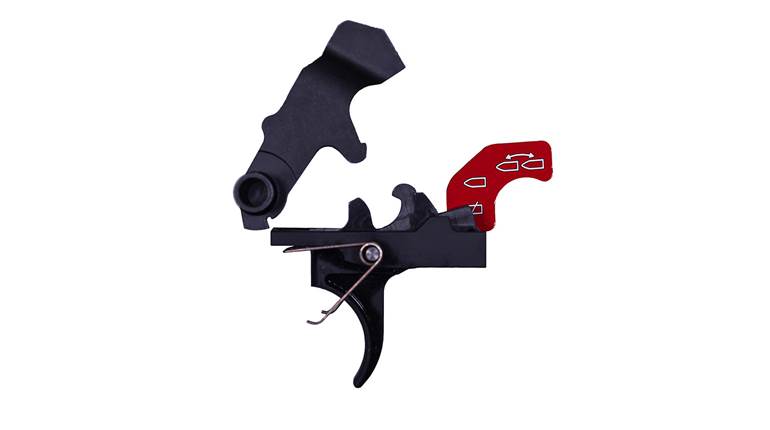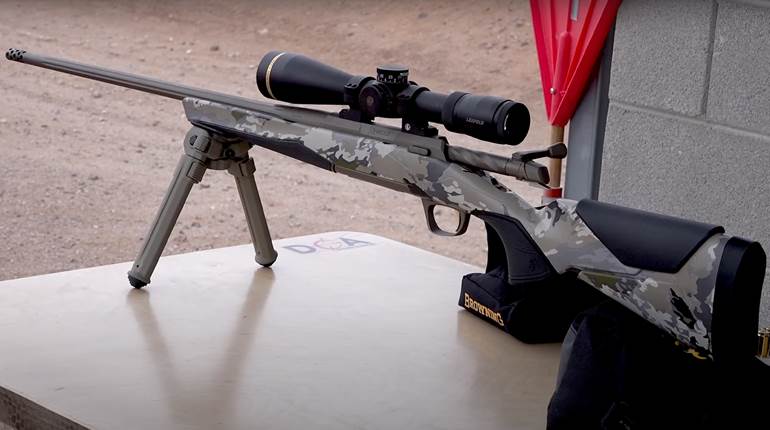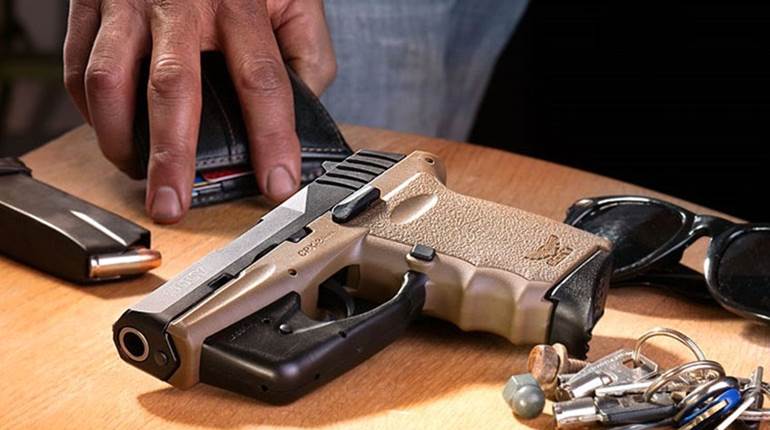
On April 14, 2010, FN Herstal (FNH) received notification from the U.S. Special Operations Command (SOCOM) Program Executive Office that the FN SCAR (Special Operations Forces Combat Assault Rifle) program achieved the Milestone C phase, authorizing the production and deployment of the following: MK16 5.56x45 mm NATO SCAR-L (SCAR-Light) (Short Barreled Rifle); MK17 7.62x51 mm NATO SCAR-H (SCAR-Heavy); MK20 7.62x51 mm NATO SSR (Sniper Support Rifle); and 40x46 mm MK13 Enhanced Grenade Launcher Module (EGLM). According to an Aug. 16, 2010, FNH USA press release, SOCOM approved the SCAR systems for full-rate production on July 30, 2010. This created some confusion at the time, however, since SOCOM quickly let it be known that it would not be purchasing the MK16.
The approval on the rest of the SCAR systems was a long time coming, considering that SOCOM had awarded FNH the SCAR development contract in November 2004. The program was actually conceived in 2002, and SOCOM drafted the Joint Operational Requirements Document (JORD). The original objective of the SCAR program was to develop a modular, multi-caliber platform for Special Operations Forces (SOF). Six years later and after spending $19 million on research, development and procurement, SOCOM is on the verge of achieving this end. SOCOM and FNH are presently developing the FN MK17 SCAR-H “common receiver,” which takes the MK17 to the next level of modularity, past its quick-change barrel function. The MK17 common receiver will be capable of accepting a 5.56 mm conversion kit, consisting of a trigger module, bolt, firing pin, magazine and barrel. According to FNH USA’s Marketing Director Combat Rifles & Technical Support Gabe Bailey that the recoil spring and guide remain the same, and there’s no need to change the case deflector.
As of December 2010, FNH has been actively developing the SCAR common receiver platform/system for about the past year and a half, and it has been testing it for roughly the past six to eight months. The common receiver is currently approaching the final phase of government testing. Bailey informed me that they’re looking at fielding the SCAR common receiver system sometime in 2011, most likely around the mid-year mark.
FNH made a wise choice in developing the common receiver, since SOCOM has decided not to purchase the MK16 variant. The reason for this is pretty straightforward: According to SOCOM Public Affairs Officer Maj. Wes Ticer, “The MK16 does not provide enough of a performance advantage over the M4 carbine to justify spending limited SOCOM funds when competing priorities are taken into consideration.” This is a diplomatic way of saying that the MK16, although it is a capable weapon system that offers more than 80 percent parts commonality with, and identical ergonomics to, the MK17, it doesn’t offer any measurable combat-relevant performance or lethality advantage over the M4 carbine. Put another way, there’s nothing a military operator can accomplish tactically or ballistically with a MK16 that he can’t already accomplish just as well with an M4, i.e., putting rounds on target quickly, accurately, and reliably in a fight. Rifle on rifle, the two look pretty evenly matched.
The FN MK17 SCAR-H common-receiver platform is a very different story, however, as its light weight (7.91 pounds in standard configuration with 16-inch barrel), multi-caliber capability, semi-quick-change barrel system, and monolithic upper receiver with integrated quad-rail system provide a new level of usability and mission adaptability/versatility over the M14. This allows the MK17 to “fill an existing capability gap for a 7.62 mm rifle,” wrote Bailey. Right out of the box, the MK17 “adds no more than one m.o.a. over the ammunition at 100 meters; this is really more precision than accuracy. In regards to accuracy, with the MK16 and MK17, it is really tied to other factors, i.e., reliability and barrel life. In basic terms, the MK16 and MK17 had to fire a minimum of 15,000 rounds with a mean-rounds-between-stoppages better than in 2,000. I believe we came in around 1 in 3,600 on both weapons and maintain 70 percent of hits on an e-type target at 300 meters. Of the 15,000 rounds, 50 percent were full-automatic fire and 25 percent were suppressed.”
The MK17 common receiver’s caliber convertibility is arguably one of the most profound threats to the M4’s survival with SOCOM, and potentially with U.S. infantry forces, since it provides long-term production and training cost advantages. Greater production increases absolute cost savings. A single SCAR common receiver can double as an assault rifle/carbine/SBR and battle rifle/carbine/SBR, as opposed to the M4, MK18 MOD 1, M16, MK12 MOD 1 and M14, which are all individual systems, and the AR-type arms and the M14 are completely different platforms. This may be one of the reasons Colt Defense has designed and developed the Colt CM901 7.62x51 mm NATO AR-10 type modular/multi-caliber battle rifle with a “universal” lower receiver, to match the capabilities of the SCAR series.
The MK17’s reception by SOF warfighters has generally been positive. Operators enjoy the rifle’s light weight and adaptability. The only controversial aspect of the system of which I am aware is its reciprocating charging handle, which some military operators find unwieldy. I am not a big fan of reciprocating charging handles either, and I would like to see a non-reciprocating charging handle developed for SCAR.
FNH’s and SOCOM’s goal with the MK20 SSR (Sniper Support Rifle) was originally to give military snipers a one m.o.a. gun that can fire 4,000 rounds between stoppages, fire accurately on full-automatic, and be used as a full-capability battle rifle. However, it would appear that the MK 20 is now a semi-automatic-only rifle with a 45-degree-throw safety/selector lever. The MK20 features a beefed-up barrel attachment system, utilizing more barrel retention and barrel extension screws; an extended receiver for mounting in-line night vision and thermal optics and standard day sniper optics; a modular single-stage/two-stage trigger; a non-folding adjustable precision buttstock; and a thicker, free-floating heavy barrel.
According to FNH, it is to be fielded in May 2011. The MK20 offers more than 60 percent parts commonality with the MK17. Its trigger-pull weight is 4 pounds (+/- 0.5 lbs.) versus the MK16’s and MK17’s 6-pound (+/- 1.5 lbs.) trigger-pull weight. Accuracy is a claimed 0.25 m.o.a. at 100 meters over baseline ammunition. The MK20’s threshold barrel life is a claimed to be 7,000 rounds, but 15,000 rounds is the objective goal, while maintaining a group size under 2.5 m.o.a. SOCOM has deemed the MK20 “Operationally Effective /Operationally Suitable and Sustainable.”
A bit lower down on most people’s SCAR radar is the under-barrel-mounted/stand-alone 40 mm MK13 EGLM (Enhanced Grenade Launcher Module), which replaces the M203. Unlike the M203, the MK13 swivels left and uses new low-impulse 40 mm munitions that allow the operator to engage the enemy out to 800 meters.
In my opinion, the hands-down most interesting and ambitious SCAR variant is the aptly named FN Heat Adaptive Modular Rifle (HAMR), which is FN’s Infantry Automatic Rifle (IAR). Where other IARs feature open-bolt, full-automatic/closed-bolt, semi-automatic operation to avoid cook-offs, the HAMR’s thermal regulation system controls the bolt carrier position. The FN HAMR will initially fire from the closed-bolt position in both either semi-automatic or full-automatic. Once the chamber reaches a certain temperature, however, it will transition automatically to open-bolt operation before it reaches its cook-off threshold. Once the chamber’s temperature comes back down below its cook-off threshold, the gun will return to closed-bolt operation. The HAMR hasn’t landed any U.S. military contracts, yet.
SOCOM’s Fiscal Year 2011 budget submission for all SCAR variants is $3 million. According to SOCOM Public Affairs, “SOCOM will use the existing contract with the manufacturer to procure the weapons. SOCOM is in the process of determining the exact quantities of the MK17, MK13 and MK20 variants that will be purchased,” said Maj. Ticer.






































